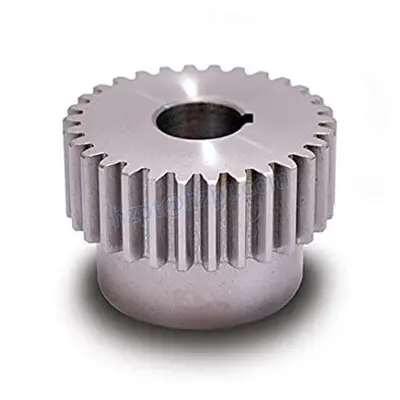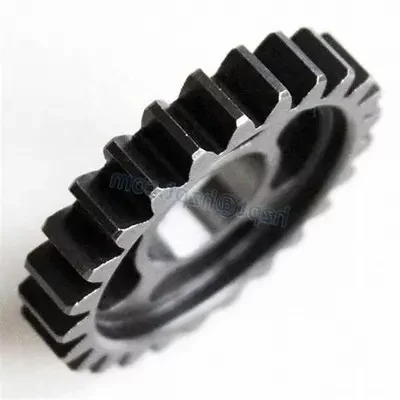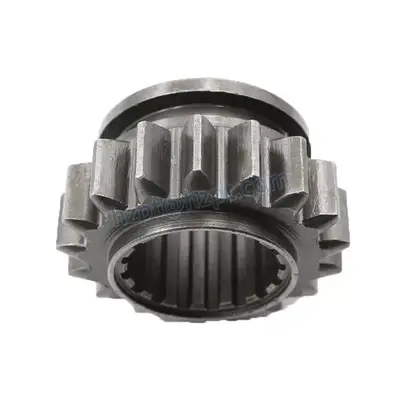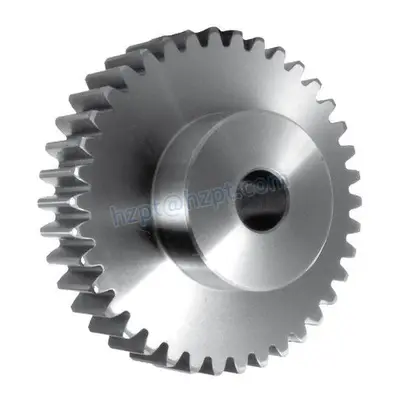Spur Gear
TEBSA’s spur gears deliver reliable power for Argentina’s farms and industries, from soybean harvesters in Córdoba to factory conveyors in Buenos Aires. Since 1997, we’ve crafted these precision gears using alloy steel, forging, and advanced heat treatments like carburization to ensure durability in tough conditions. With a 100% quality guarantee and 50% cost savings compared to original brands, our spur gears are built to keep your machinery running smoothly, whether in the Pampas or beyond.
Plastic-Based Spur Gears

Plastic Spur Gears

Nylon Spur Gear
Metal-Based Spur Gears

Steel Spur Gear

Forging Spur Gear

Brass Spur Gear
Application-Specific Spur Gears

Tractor Spur Gear

Automotive Spur Gear

Nylon Spur Gear
Application-Specific Spur Gears

High Durability with
Premium Materials
Crafted from alloy steel or stainless steel, processed through forging and carburization for enhanced strength.Built to withstand Argentina’s demanding agricultural environments, like soybean fields in the Pampas, ensuring long-lasting performance with minimal wear. TEBSA’s ISO9001-2015 certification guarantees top-tier quality.

Precision Engineering for
Efficient Power Transfer
Precision-machined with accurate module and pitch diameter, ensuring smooth meshing and minimal energy loss.Delivers reliable power to farm equipment like tractors and harvesters, boosting productivity in regions like Córdoba. Reduces maintenance costs with TEBSA’s 100% quality assurance.

Cost-Effective
Performance
Designed to offer a 50% cost advantage compared to original equipment manufacturer (OEM) gears.Affordable without compromising quality, making TEBSA spur gears a smart choice for Argentine farmers and industrial operators seeking value in Buenos Aires or Mendoza.

Versatile Applications
Across Industries
Available in standard and custom configurations to suit various gear ratios and sizes.Fits diverse equipment, from wheat harvesters to industrial conveyors, supporting Argentina’s agricultural and manufacturing sectors. Custom options meet specific needs, backed by TEBSA’s 24-hour engineering support.

Low Maintenance with
Robust Design
Features a compact design with surface treatments like blackening or phosphorization to resist corrosion and wear.Reduces downtime in harsh conditions, such as humid Argentine summers, saving time and costs for farmers in Santa Fe. Easy-to-maintain gears extend equipment life.

Enhanced Safety
and Reliability
Engineered with tapered roller seals and heat-treated gears to handle high-torque loads without failure.Ensures safe operation in heavy-duty tasks, like powering harvesters in Rosario, protecting both equipment and operators. TEBSA’s 100% quality guarantee minimizes risks.
About us
Since 1997, TEBSA has been a cornerstone of Argentina’s agricultural and industrial sectors, delivering high-quality spur gears, gearboxes, and mechanical components that power farms and factories nationwide. Based in the heart of Argentina, we understand the demands of local agriculture—whether it’s soybean harvesting in the Pampas or wheat processing in Córdoba. Our ISO9001-2015 certification reflects our commitment to precision, durability, and a 100% quality guarantee for every product. Using advanced techniques like forging, carburization, and blackening, we craft components from alloy steel and stainless steel to withstand Argentina’s toughest conditions. With a 50% cost advantage over original brands and a dedicated engineering team that responds within 24 hours, TEBSA is your trusted partner for reliable, cost-effective solutions. From custom spur gears for Mendoza’s vineyards to robust PTO shafts for Santa Fe’s tractors, we’re proud to support Argentina’s growth with innovation and expertise.
Get Started with TEBSA
Ready to power your machinery with TEBSA’s durable, affordable solutions? Contact us today for a quote and see why farmers and industries across Argentina choose us!





